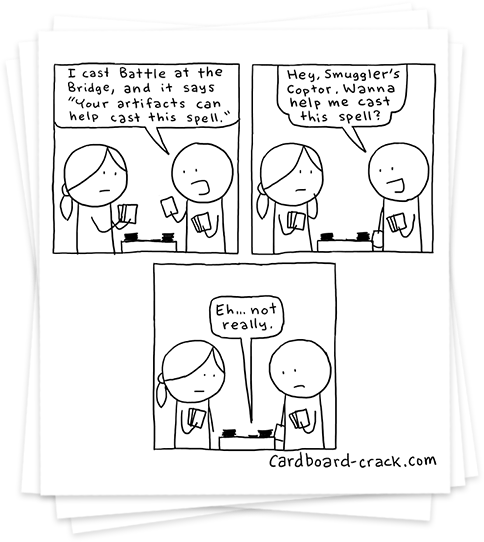
Them's The Breakpoints
By Jadine Klomparens  The beginning turns of a game of Magic are generally the easiest. Both players develop their battlefield according to their gameplan without much credence given to what the opponent may be doing. Eventually, games will reach a point where both players have a somewhat developed battlefield and three to five cards left behind in their hand. In Standard, this mid-game is generally reached around turn 4 or 5. At this point in the game, the three to five cards in each player's hand can be virtually anything. It's time to start narrowing down the possibilities. From the mid-game on, whenever the opponent makes a play that seems slightly suboptimal, make a note of it. Suboptimal plays tell us a lot. When our opponent uses the wrong card to answer a problem you presented them with, it probably means they don't have the right card in their hand. Even more telling is when they don't answer a problem at all, despite it playing a critical role in the matchup. Imagine being on the draw against a Jeskai Control deck. The game has progressed normally; you have managed to stick a Thraben Inspector and a Walking Ballista and are whittling away at their life total with those two, but every other spell you've cast has been countered. Meanwhile, your opponent has done control things like cast Glimmer of Genius and make land drops. On turn 6, staring down six untapped lands, you cross your fingers and slam Gideon, Ally of Zendikar. They answer it with yet another Disallow. What did you learn?  |
















0 comments:
Post a Comment